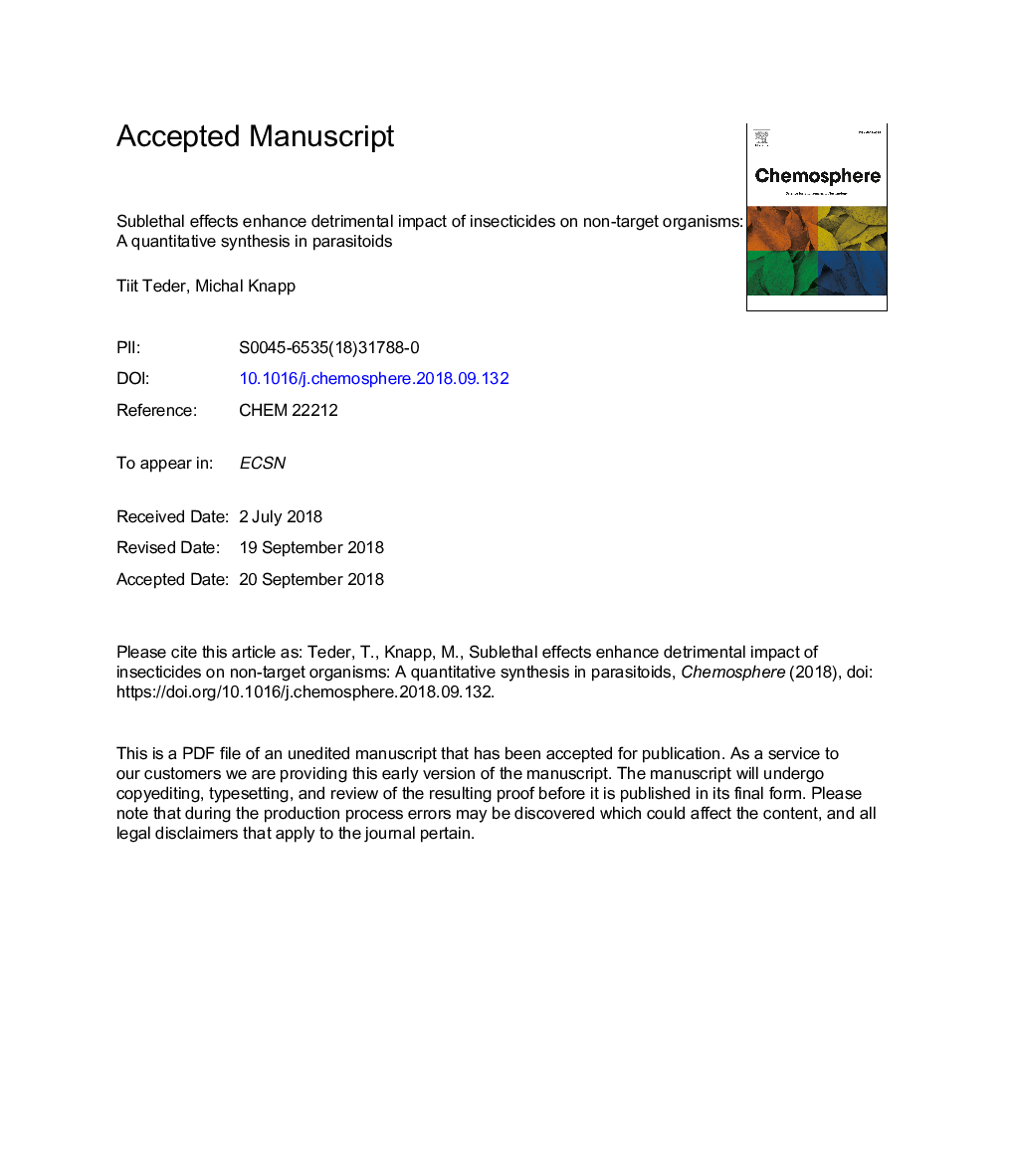| Article ID | Journal | Published Year | Pages | File Type |
|---|---|---|---|---|
| 11025162 | Chemosphere | 2019 | 34 Pages |
Abstract
Parasitoids acting as biocontrol agents provide farmers with valuable ecosystem services, but are sensitive to insecticides applied against pests. Besides lethal effects of insecticides, sublethal effects observed among survivors may further influence parasitoids' performance. However, information on sublethal effects is scattered across case studies, without a quantitative synthesis and evaluation of generality of respective data. We conducted an analysis of 85 primary empirical datasets to quantify sublethal effects of insecticide application on two key parameters of parasitoid fitness, offspring production and proportion of females among offspring (i.e. sex ratio). To create a direct link to existing agricultural practices, we primarily focused on studies in which parasitoids were exposed to field-recommended concentrations of insecticides. Insecticide-exposed females produced substantially fewer and more male-biased offspring, accounting for an average of about 28% cumulative loss in parasitoid reproductive capacity per generation. The magnitude of sublethal effects was significantly affected by insecticide mode of action, with broad-spectrum insecticides being particularly harmful to parasitoid reproductive performance. Transgenic crops and toxins derived from such plants were generally associated with weaker sublethal effects than majority of synthetic insecticides. Nevertheless, species responses, even to the same insecticides and transgenic crops, showed high variability, cautioning against extrapolating results from individual studies to a wider range of species. Overall, our results indicate that sublethal side-effects on parasitoid reproductive performance represent a significant and widespread cost of insecticides that should explicitly be taken into account when evaluating their harmfulness. Linking laboratory results to field situations remains a key challenge for future research.
Keywords
Related Topics
Life Sciences
Environmental Science
Environmental Chemistry
Authors
Tiit Teder, Michal Knapp,
